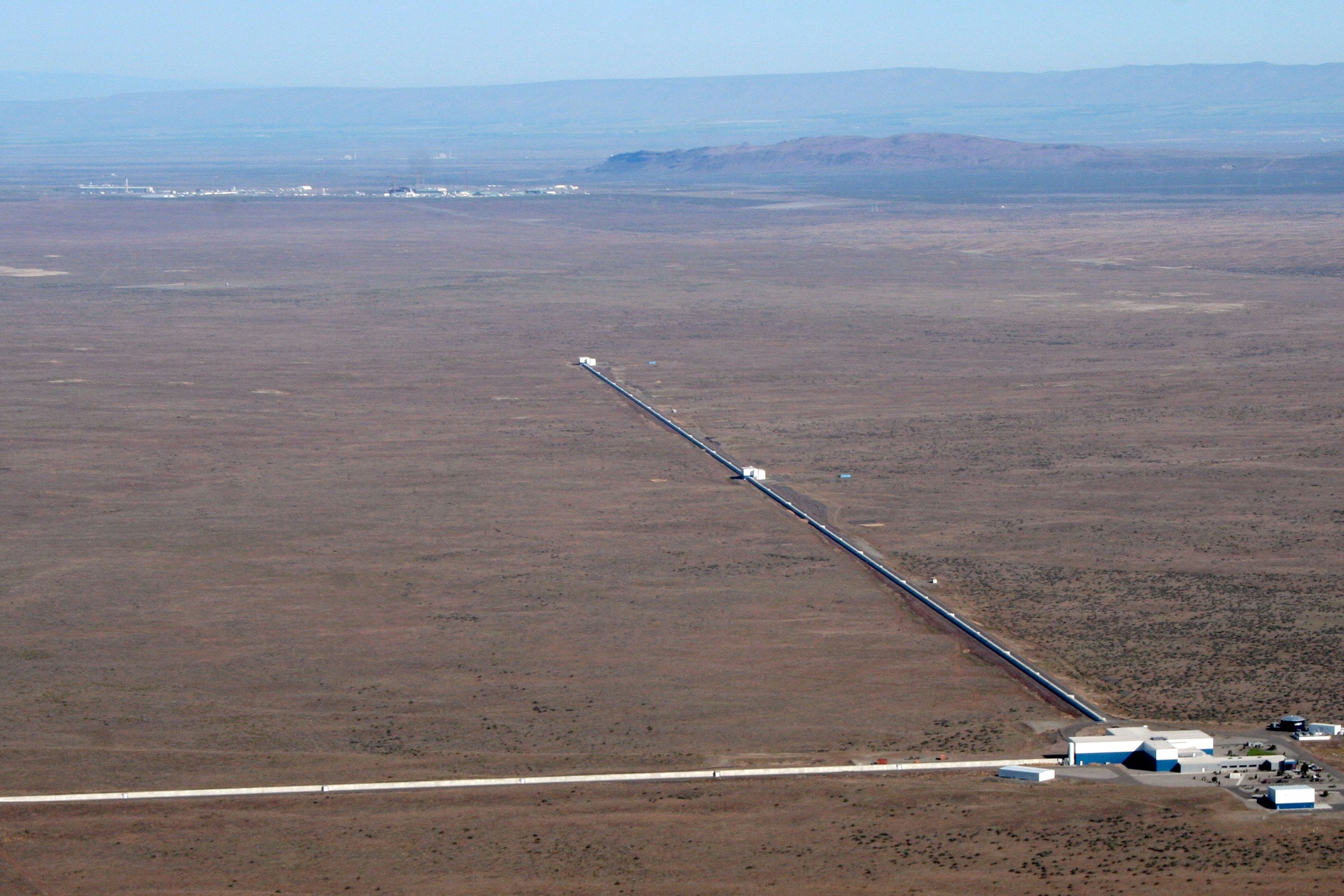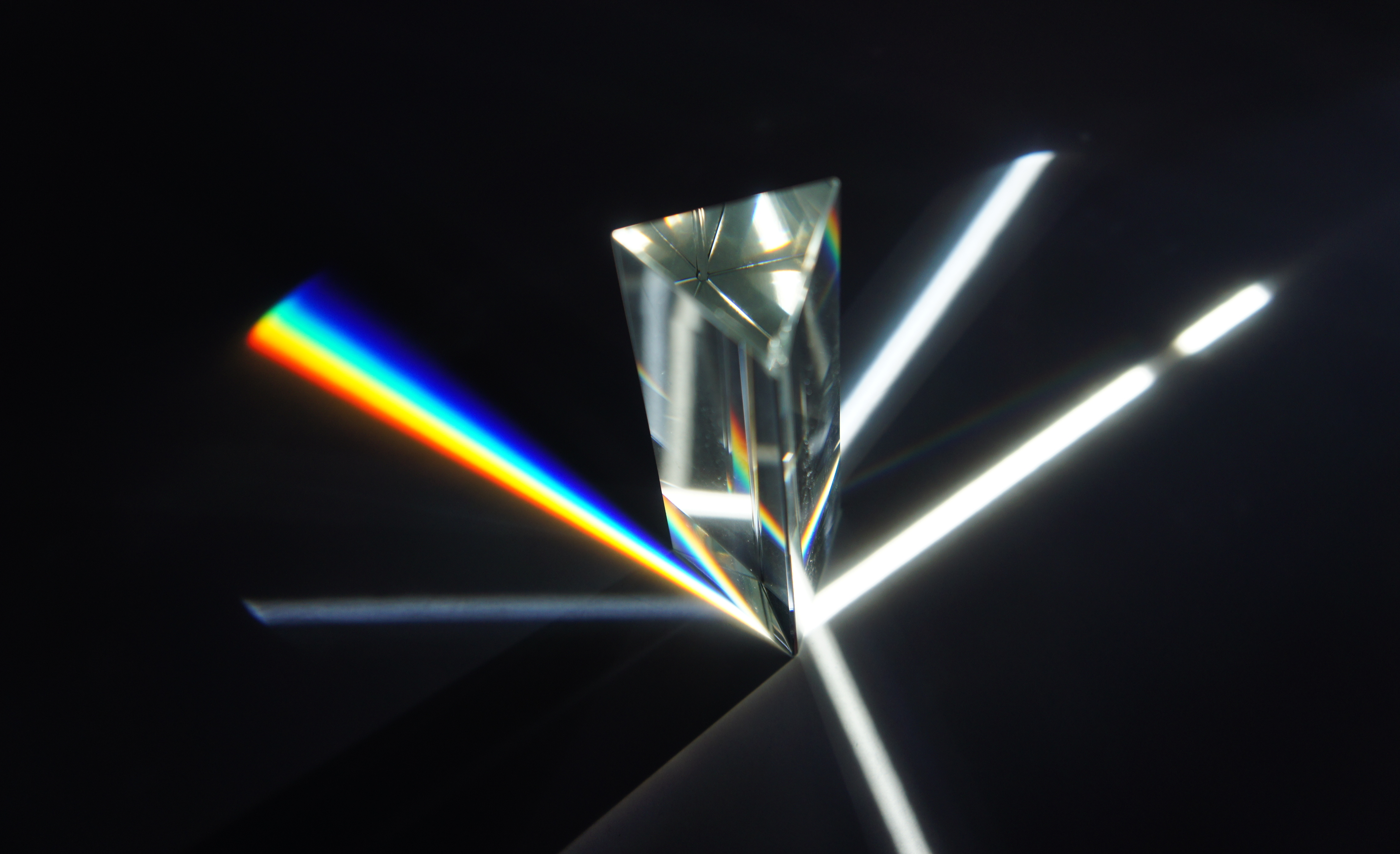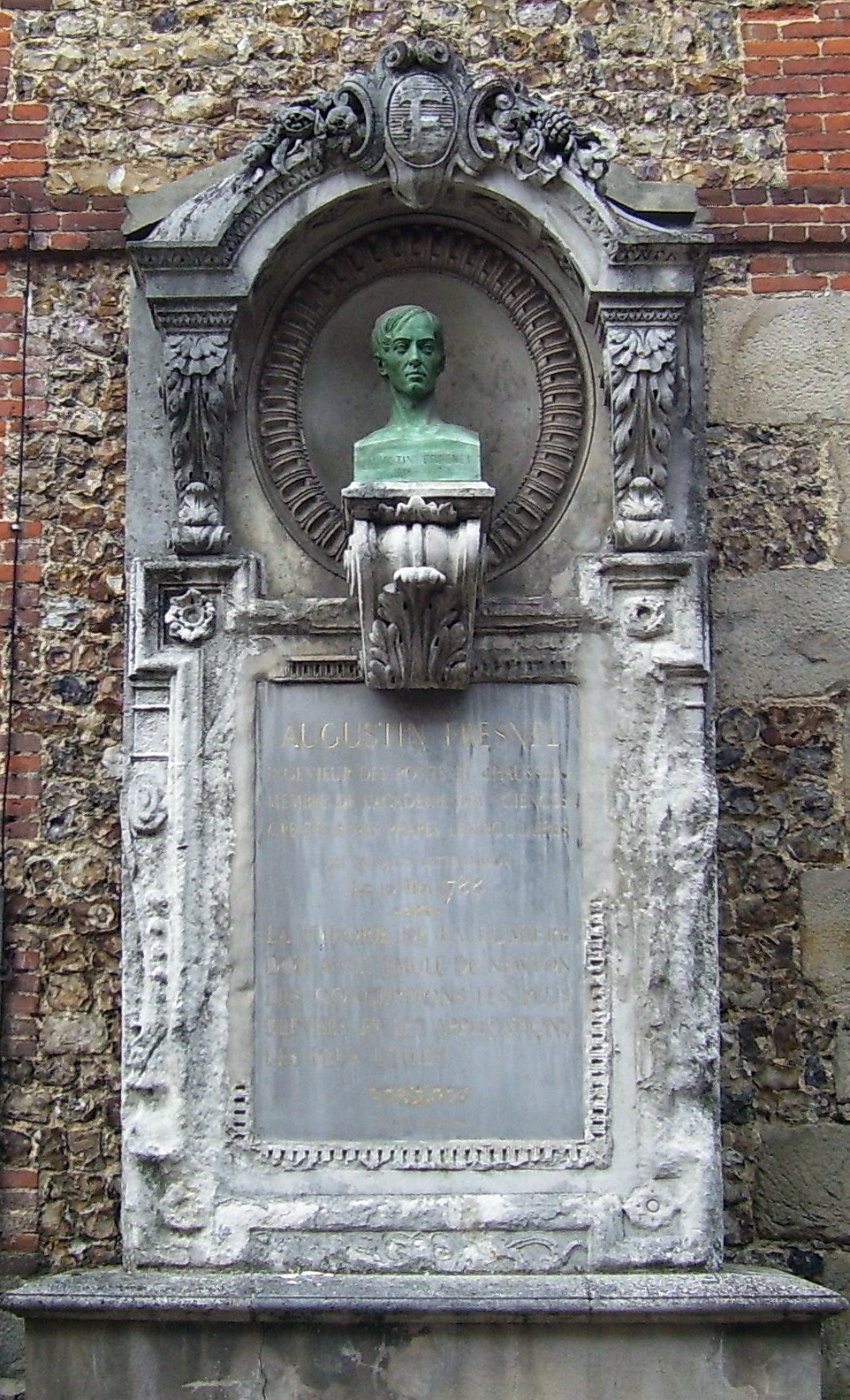|
Common-path Interferometer
A common-path interferometer is a class of interferometers in which the reference beam and sample beams travel along the same path. Examples include the Sagnac interferometer, Zernike phase-contrast interferometer, and the point diffraction interferometer. A common-path interferometer is generally more robust to environmental vibrations than a "double-path interferometer" such as the Michelson interferometer or the Mach–Zehnder interferometer. Although travelling along the same path, the reference and sample beams may travel along opposite directions, or they may travel along the same direction but with the same or different polarization. Double-path interferometers are highly sensitive to phase shifts or length changes between the reference and sample arms. Because of this, double-path interferometers have found wide use in science and industry for the measurement of small displacements, refractive-index changes, surface irregularities and the like. There are applications, however ... [...More Info...] [...Related Items...] OR: [Wikipedia] [Google] [Baidu] |
Interferometer
Interferometry is a technique which uses the '' interference'' of superimposed waves to extract information. Interferometry typically uses electromagnetic waves and is an important investigative technique in the fields of astronomy, fiber optics, engineering metrology, optical metrology, oceanography, seismology, spectroscopy (and its applications to chemistry), quantum mechanics, nuclear and particle physics, plasma physics, biomolecular interactions, surface profiling, microfluidics, mechanical stress/strain measurement, velocimetry, optometry, and making holograms. Interferometers are devices that extract information from interference. They are widely used in science and industry for the measurement of microscopic displacements, refractive index changes and surface irregularities. In the case with most interferometers, light from a single source is split into two beams that travel in different optical paths, which are then combined again to produce interference; two ... [...More Info...] [...Related Items...] OR: [Wikipedia] [Google] [Baidu] |
Adaptive Optics
Adaptive optics (AO) is a technique of precisely deforming a mirror in order to compensate for light distortion. It is used in Astronomy, astronomical telescopes and laser communication systems to remove the effects of Astronomical seeing, atmospheric distortion, in microscopy, optical fabrication and in retinal imaging systems to reduce optical aberrations. Adaptive optics works by measuring the distortions in a wavefront and compensating for them with a device that corrects those errors such as a deformable mirror or a liquid crystal array. Adaptive optics should not be confused with active optics, which work on a longer timescale to correct the primary mirror geometry. Other methods can achieve resolving power exceeding the limit imposed by atmospheric distortion, such as speckle imaging, aperture synthesis, and lucky imaging, or by moving outside the atmosphere with space-based telescope, space telescopes, such as the Hubble Space Telescope. History Adaptive optics was ... [...More Info...] [...Related Items...] OR: [Wikipedia] [Google] [Baidu] |
Twyman–Green Interferometer
A Twyman–Green interferometer is a variant of the Michelson interferometer principally used to test optical components. It was introduced in 1918 by Frank Twyman and Arthur Green. Fig. 1 illustrates a Twyman–Green interferometer set up to test a lens. Light from a laser is expanded by a diverging lens (not shown), then is collimated into a parallel beam. A convex spherical mirror is positioned so that its center of curvature coincides with the focus of the lens being tested. The emergent beam is recorded by an imaging system for analysis. The fixed mirror in the Michelson interferometer is rotatable in the Twyman–Green interferometer, and while the light source is usually an extended source (although it can also be a laser) in a Michelson interferometer, the light source is always a point-like source in the Twyman–Green interferometer. The rotation of one mirror results in straight fringes appearing in the interference pattern In physics, interference is a ph ... [...More Info...] [...Related Items...] OR: [Wikipedia] [Google] [Baidu] |
Birefringence
Birefringence, also called double refraction, is the optical property of a material having a refractive index that depends on the polarization and propagation direction of light. These optically anisotropic materials are described as birefringent or birefractive. The birefringence is often quantified as the maximum difference between refractive indices exhibited by the material. Crystals with non-cubic crystal structures are often birefringent, as are plastics under mechanical stress. Birefringence is responsible for the phenomenon of double refraction whereby a ray of light, when incident upon a birefringent material, is split by polarization into two rays taking slightly different paths. This effect was first described by Danish scientist Rasmus Bartholin in 1669, who observed it in Iceland spar (calcite) crystals which have one of the strongest birefringences. In the 19th century Augustin-Jean Fresnel described the phenomenon in terms of polarization, understanding ... [...More Info...] [...Related Items...] OR: [Wikipedia] [Google] [Baidu] |
Fabry–Pérot Interferometer
In optics, a Fabry–Pérot interferometer (FPI) or etalon is an optical cavity made from two parallel reflecting surfaces (i.e.: thin mirrors). Optical waves can pass through the optical cavity only when they are in resonance with it. It is named after Charles Fabry and Alfred Perot, who developed the instrument in 1899. ''Etalon'' is from the French ''étalon'', meaning "measuring gauge" or "standard". Etalons are widely used in telecommunications, lasers and spectroscopy to control and measure the wavelengths of light. Recent advances in fabrication technique allow the creation of very precise tunable Fabry–Pérot interferometers. The device is technically an interferometer when the distance between the two surfaces (and with it the resonance length) can be changed, and an etalon when the distance is fixed (however, the two terms are often used interchangeably). Basic description The heart of the Fabry–Pérot interferometer is a pair of partially reflective glass ... [...More Info...] [...Related Items...] OR: [Wikipedia] [Google] [Baidu] |
LIGO
The Laser Interferometer Gravitational-Wave Observatory (LIGO) is a large-scale physics experiment and observatory designed to detect cosmic gravitational waves and to develop gravitational-wave observations as an astronomical tool. Prior to LIGO, all data about the universe has come in the form of light and other forms of electromagnetic radiation, from limited direct exploration on relatively nearby Solar System objects such as the Moon, Mars, Venus, Jupiter and their moons, asteroids etc, and from high energy cosmic particles. Initially, two large observatories were built in the United States with the aim of detecting gravitational waves by laser interferometry. Two additional, smaller gravity wave observatories are now operational in Japan KAGRA, (KAGRA) and Italy Virgo interferometer, (Virgo). The two LIGO observatories use mirrors spaced four kilometers apart to measure changes in length—over an effective span of 1120 km—of less than one ten-thousandth the charge radius, ... [...More Info...] [...Related Items...] OR: [Wikipedia] [Google] [Baidu] |
Electron Holography
Electron holography is holography with electron matter waves. It was invented by Dennis Gabor in 1948 when he tried to improve image resolution in electron microscope. The first attempts to perform holography with electron waves were made by Haine and Mulvey in 1952; they recorded holograms of zinc oxide crystals with 60 keV electrons, demonstrating reconstructions with approximately 1 nm resolution. In 1955, G. Möllenstedt and H. Düker invented an electron biprism, thus enabling the recording of electron holograms in off-axis scheme. There are many different possible configurations for electron holography, with more than 20 documented in 1992 by Cowley. Usually, high spatial and temporal coherence (i.e. a low energy spread) of the electron beam are required to perform holographic measurements. High-energy electron holography in off-axis scheme Electron holography with high-energy electrons (80-200 keV) can be realized in a transmission electron microscope Tr ... [...More Info...] [...Related Items...] OR: [Wikipedia] [Google] [Baidu] |
Biprism
An optical prism is a transparent optical element with flat, polished surfaces that are designed to refract light. At least one surface must be angled—elements with two parallel surfaces are ''not'' prisms. The most familiar type of optical prism is the triangular prism, which has a triangular base and rectangular sides. Not all optical prisms are geometric prisms, and not all geometric prisms would count as an optical prism. Prisms can be made from any material that is transparent to the wavelengths for which they are designed. Typical materials include glass, acrylic and fluorite. A dispersive prism can be used to break white light up into its constituent spectral colors (the colors of the rainbow) to form a spectrum as described in the following section. Other types of prisms noted below can be used to reflect light, or to split light into components with different polarizations. Types Dispersive ''Dispersive prisms'' are used to break up light into its constitu ... [...More Info...] [...Related Items...] OR: [Wikipedia] [Google] [Baidu] |
Augustin Fresnel
Augustin-Jean Fresnel (10 May 1788 – 14 July 1827) was a French civil engineer and physicist whose research in optics led to the almost unanimous acceptance of the wave theory of light, excluding any remnant of Isaac Newton, Newton's corpuscular theory of light, corpuscular theory, from the late 1830s until the end of the 19th century. He is perhaps better known for inventing the Catadioptric system, catadioptric (reflective/refractive) Fresnel lens and for pioneering the use of "stepped" lenses to extend the visibility of lighthouses, saving countless lives at sea. The simpler Dioptrics, dioptric (purely refractive) stepped lens, first proposed by Georges-Louis Leclerc, Comte de Buffon, Count Buffon and independently reinvented by Fresnel, is used in screen magnifying glass, magnifiers and in condenser lenses for overhead projectors. By expressing Christiaan Huygens, Huygens's principle of secondary waves and Thomas Young (scientist), Young's principle of interference ... [...More Info...] [...Related Items...] OR: [Wikipedia] [Google] [Baidu] |
Corpuscular Theory Of Light
In optics, the corpuscular theory of light states that light is made up of small discrete particles called " corpuscles" (little particles) which travel in a straight line with a finite velocity and possess impetus. This notion was based on an alternate description of atomism of the time period. Isaac Newton laid the foundations for this theory through his work in optics. This early conception of the particle theory of light was an early forerunner to the modern understanding of the photon. This theory came to dominate the conceptions of light in the eighteenth century, displacing the previously prominent vibration theories, where light was viewed as "pressure" of the medium between the source and the receiver, first championed by René Descartes, and later in a more refined form by Christiaan Huygens. In part correct, being able to successfully explain refraction, reflection, rectilinear propagation and to a lesser extent diffraction, the theory would fall out of favor in the e ... [...More Info...] [...Related Items...] OR: [Wikipedia] [Google] [Baidu] |
Young's Interference Experiment
Young's interference experiment, also called Young's double-slit interferometer, was the original version of the modern double-slit experiment, performed at the beginning of the nineteenth century by Thomas Young. This experiment played a major role in the general acceptance of the wave theory of light. In Young's own judgement, this was the most important of his many achievements. Theories of light propagation in the 17th and 18th centuries During this period, many scientists proposed a wave theory of light based on experimental observations, including Robert Hooke, Christiaan Huygens and Leonhard Euler. However, Isaac Newton, who did many experimental investigations of light, had rejected the wave theory of light and developed his corpuscular theory of light according to which light is emitted from a luminous body in the form of tiny particles. This theory held sway until the beginning of the nineteenth century despite the fact that many phenomena, including diffraction ef ... [...More Info...] [...Related Items...] OR: [Wikipedia] [Google] [Baidu] |
Off Axis In TEM
Off or OFF may refer to: Art and entertainment * ''Off'' (video game), a video game by Mortis Ghost. *Sven Väth, German DJ and singer who uses the pseudonym OFF * ''Off'' (album), by Ciwan Haco, 2006 * ''Off!'' (album), by Off! *Off!, an American hardcore punk band *"Off", a song by Royce da 5'9" from ''Layers'' *"Off", a song by the American band Bright from their self-titled album *Our Favorite Family, a nickname for the Simpson family in the animated television series ''The Simpsons'' Computing * OFF (file format), for polygon meshes *Open Font Format * Owner-Free File System, a P2P network Government and politics *Offutt Air Force Base, near Omaha, Nebraska *Oil-for-Food Programme, the United Nations arrangement with Iraq in existence from 1995 to 2003 *United States Office of Facts and Figures (OFF); see OWI (United States Office of War Information) Other uses * Of, a city in Turkey *Off, spoiled, as in drinks and foods that have exceeded their shelf life *Off side ... [...More Info...] [...Related Items...] OR: [Wikipedia] [Google] [Baidu] |








